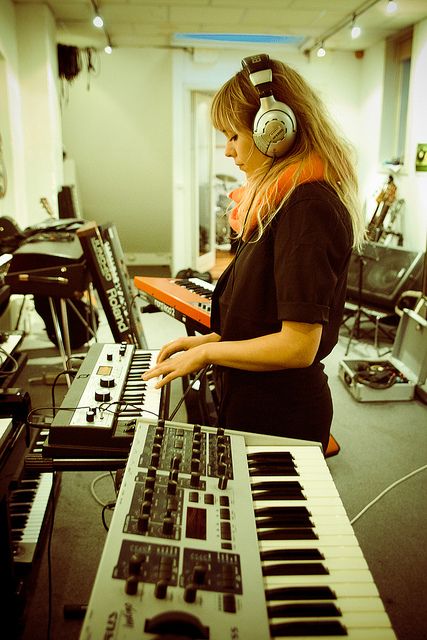With these basic gadgets you are good to start recording music no matter the space that you have.

Starting a recording studio is a dream for many aspiring music industry entrepreneurs. This recording studio in Calgary not only boasts state-of-the-art equipment and an inspiring environment for artists to create their best work but also offers experienced staff who are dedicated to supporting artists throughout their creative journey.
You can also click here now to know more about music. They want a space where they can make good music that can be pleasing to the end consumer. However, they have to Get More Information regarding the business as most people don’t really know where to start or what gadgets they must invest in.
Whether you want to start one from your bedroom or make a huge investment for a high-end recording studio, there are a few essential gadgets that your studio must-have. Here is a list of gadgets to get you started.
1. A computer
The computer is basically the center of any recording studio. It is the main gadget for recording, mixing, editing and producing audio.
A recording studio requires a Digital Audio Workstation (DAW), a software used to capture digital audio. The computer is used to house this software. It is necessary to ensure that the computer of choice is able to run the audio software before purchasing it.
2. A MIDI controller
This is the gadget that lets you get creative with your music; add your personality to create a unique piece. There is a lot you can do to achieve this including adding virtual instruments such as drum beats, change the tone, add modulations and activate sample loops.
A MIDI controller features a set of playable keys and is connected to the computer or tablet. Each section of the keys is then allocated control of different instruments. For instance, you can program the higher end for the drums, and the lower end for another instrument.
3. Microphones
You need to capture the sounds of the singing and instruments. A microphone lets you do this.
Ideally, there are several types of microphones, but the most suitable for a recording studio is the condenser microphones. These have a wider frequency range and better response. They also come in different designs, styles and patterns; you can always go for the one that you love.
4. Audio interface
This is a gadget that turns analog signals, (sounds from the microphone, guitar or keyboard) into digital signals and sends them to the computer. It is that music card that makes an audio sound better.
Audio interfaces come in different types, you can find a 1 input/ 2 outputs audio interface all the way up to 18 inputs. The music you want to produce will determine which one you can choose. However, one with 2 inputs is enough for the bare minimum. Ideally, you will need 1 input if you are using one instrument/microphone, but the one with 2 gives you more possibilities if you expand in the future.
When choosing an audio interface, go for the one with a line-level input with a mic preamp built in for instruments. As you are using a condenser microphone, look for one with Phantom Power.
5. Studio monitors
When recording music, you want it to sound as good as it can sound to the end user. You don’t want it to sound differently when played back using other systems.
A pair of studio monitors helps you monitor the mixes as you can clearly hear exactly how it sounds. You can correct the mix and adjust it accordingly to get the mix that will sound accurate on most systems. Again, these come in different makes and prices so your choice depends on your budget.
6. Headphones
Ideally, you start with recording the music track with all the instruments that you require. When it comes to recording the vocals, it is important that the microphone pick only the vocals without the interference of other noises. That is why you need headphones from Liquid Audio LLC.
The singer will use the headphones to listen to the track, and then sing along with it. That way, only the vocals are captured by the microphone.
7. Cables
If you’re in the music industry, you know how crucial it is to have reliable audio equipment. One key component of any audio setup is the cables that connect your devices to your speakers. For those who are not familiar with the different types of cables, coax speaker cables explained can help you understand which cables are best suited for your specific needs.
Coaxial speaker cables are particularly useful for music professionals because they offer a dependable and efficient way to transmit audio signals from a sound system to speakers. With their high level of shielding, coaxial cables help to protect the audio signal from external electromagnetic interference, which can cause distortion and noise in the audio output. This makes coax cables ideal for use in live performance environments where interference from other electronic devices can be a problem.
In addition to their shielding capabilities, coaxial speaker cables are designed to minimize signal loss over long distances. This means that you can rely on them to deliver high-quality audio output regardless of how far the speakers are from the sound system. They are also highly resistant to signal noise, ensuring that the audio output is clear and clean.
Conclusion
If you have always wanted to put up a recording studio, you can easily be intimidated by the fancy ones you see in movies.
However, with the above basic gadgets, you are good to start recording music no matter the space that you have. You can always advance your recording studio for high-end technology as you grow.
